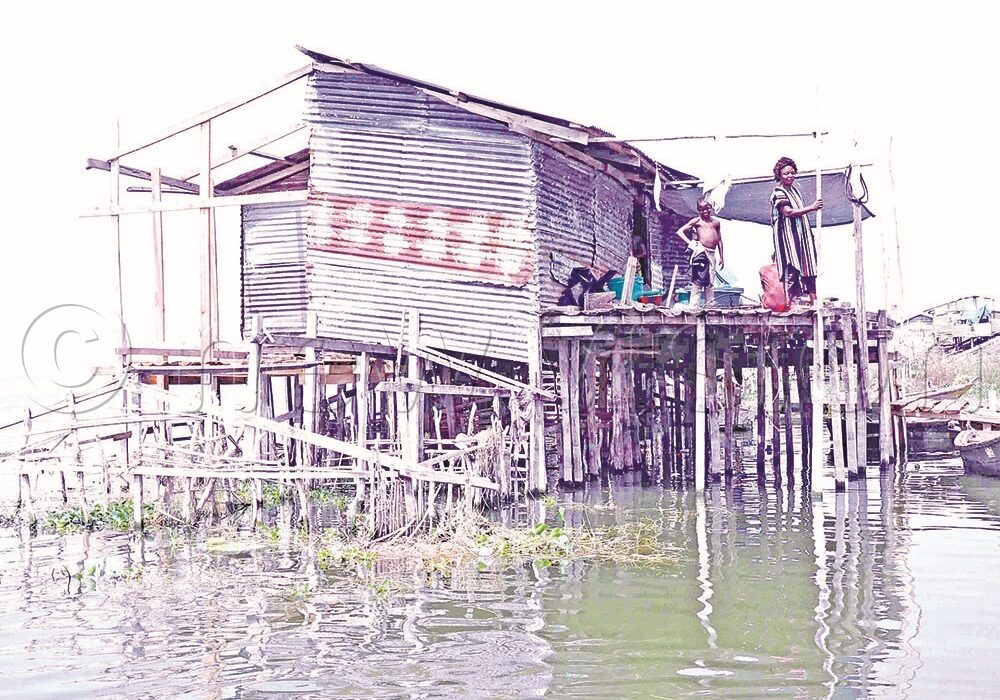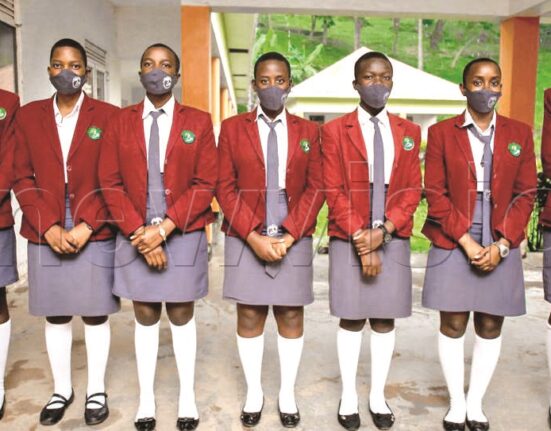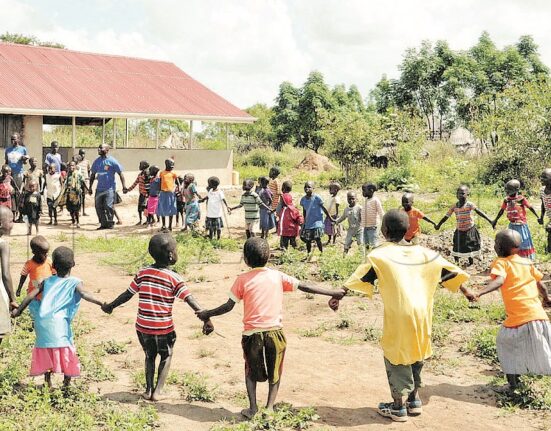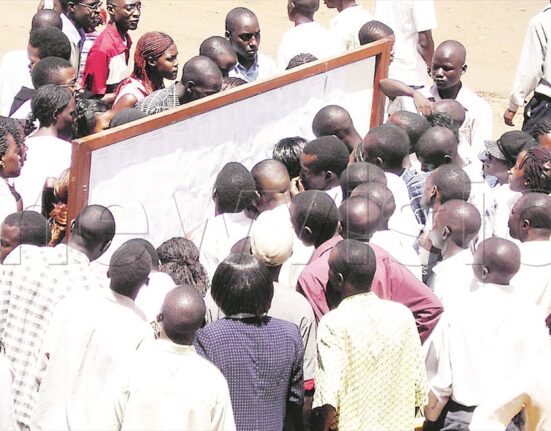(This article was first published on the New Vision website on February 23, 2023)
By Gerald Tenywa
For three years, life has turned into hell for Sarah Nakachwa, a resident of Katoogo in Ggaba, on the outskirts of Kampala city.
She has had to shift her place of abode three times within a short spell after Lake Victoria ran amok.
“I was forced to shift several times as the lake water levels kept rising, causing floods. Life became difficult. I needed a lot of money both for rent and to treat my children who frequently fell sick due to malaria. The sickness affected their studies a lot,” she says.
Nakachwa was one of the over 200,000 locals displaced by wild waters from Lake Victoria and other water bodies in Uganda and the neighbouring countries between 2019 and 2021. For Charles Odongo Onyonga of Olep, a remote village in Ochero sub-county, Kaberamaido district, farming has become a nightmare.
“For instance, we used to plant millet in December, sure that the first rains would start late January or early February and indeed, the rains would start. But these days, the weather has become deceptive. The rains no longer come on time,” he says.
According to the State of Climate of Uganda 2021 report, the extreme weather events of 2021 led to flooding that affected several communities across the country.
The devastating effects included loss of life, livestock and property, and the destruction of infrastructure.
By August 2021, 222,930 persons from 36,404 households had been affected by floods, drought, landslides, heavy storms and fire outbreaks
Why Ugandans should care about climate change
More than 20,000 individuals from 3,344 households were forced to internally displaced people’s camps.
On the shores of Lake Albert in Ntoroko district, more than 70 households displaced by floods lived for over two years on suspended makeshift structures hanging on top of their former homes.
Unknown to Nakachwa and many, the increased number of natural disasters are a result of climate change that has hit home, mainly exacerbated by human activities such as the destruction of forests and wetlands.
“Wetlands and forests that used to act as breaks for the water have become degraded,” Dr Callist Tindimugaya, the commissioner in charge of planning at the Ministry of Water and Environment, says.
Previously, water-related disasters were rare, once in a while hitting areas around Kasese in western Uganda and Bududa on the slopes of Mt Elgon, but landslides have now become the order of the day in these regions.
It is not only about water-related disasters hitting Kasese and the Elgon areas, but droughts are also increasingly devastating parts of northeastern Uganda as climate change hits home, Tindimugaya says.
What is climate change?
The term climate change refers to the significant and lasting change in global weather conditions over a period of 25 years or longer, and mainly resulting from human activities.
According to the United Nations (https://www.un.org/en/ climate-change/science/key-findings), the world has been warmer and colder for millions of years, but today is experiencing unprecedented rapid warming from human activities that generate greenhouse gas emissions.

The warming of the earth caused by the increased concentration of greenhouse gases such as carbon dioxide that trap the heat escaping from the earth surface is one of the biggest development challenges. Such gases are emitted by burning fossil fuels such as oil and coal in factories and vehicles.
Other sources include decomposing materials such as solid waste and burning of waste.
Uganda not spared
As the world warms up, Uganda has not been spared from the high temperatures, according to new assessments conducted by the Uganda National Meteorological Authority.
For the warming trend over Uganda since 1950, all the 20 warmest years on record in Uganda were experienced in the last two decades, according to the State of Climate for Uganda 2021 report.
The year 2019 was Uganda’s warmest and 2021 was the third warmest. The year 2009 was the second warmest in the last two decades.
An analysis of average annual temperatures between 1951-1980 and 1981-2010 shows a notable increase of approximately 0.50 C-1.20 C for minimum temperatures and 0.60 C-0.90 C for maximum temperatures, according to a report by USAID (Uganda Climate change vulnerability assessment report).
This warming trend is projected to continue, with some models projecting an increase of more than 20 C by 2030. It will likely have a strong impact on agriculture and livestock, increasing the risk of disease and pest infestations.
Why Ugandans should care
In a warming world, Uganda’s agriculture, which provides livelihood to 70% of the population, is going to suffer more than other sectors of the economy.
The small scale farmers or subsistence farmers have also been found to be vulnerable to the changing climate.
“Under warming of 20 C, crop yields across sub-Saharan Africa will decrease by 10%. Warming beyond the 20 C mark will cause crop yields to fall by up to 20%.
If warming is allowed to hit the 30 C mark, all present-day cropping areas for maize, millet and sorghum in Africa will become unsuitable,” according to International Livestock Research Institute.
What we can do
- Robert Bakiika, an environmental activist, says: “We have to respond to climate change with adaptation and mitigation interventions if we are to avoid reversing the many years of development.”
Climate change adaptation refers to actions that reduce the negative impact of climate change, while taking advantage of potential new opportunities. On the other hand, mitigation refers to reducing greenhouse gases that cause climate change, according to the United Nations Framework Convention on Climate Change.
- Richard Kimbowa, the executive director of Uganda Coalition for Sustainable Development, says there are many opportunities that address climate change and livelihoods at the local level. He cited tree planting as one of the interventions and described trees as carbon sinks that absorb waste gases, but also generate fi rewood and income.
- He also pointed out that agro-forestry systems — which provide many goods and services, including fruits, food, fibers and adding fertility to soil — are not new to most landscapes of Uganda. “We need to rediscover such practices in the fight against climate change,” Kimbowa says.
- He adds that biogas is an alternative source of energy that could substitute charcoal and firewood. Kimbowa also says cow dung and human waste from institutions such as schools should be converted into energy to save the environment and also cut the escalating cost of buying charcoal and firewood. He adds that organic waste such as banana peelings could be converted into charcoal briquettes that are environmentally friendly and save money.
- Kimbowa notes that solar power is proving to be a better alternative to lighting homes and this also helps to cut costs since it is cheaper than hydroelectric power in the long term. In agriculture, there are opportunities of addressing climate change.
- Gaster Kiyingi, the executive director Agriculture Tree Talk, says farmers practising climate-smart agriculture produce three times more than those that practise conventional agriculture.
- He describes climate-smart agriculture as part of simple interventions which promote conservation of water and manure in the soil. This increases the productivity of soil and also shields farmers and the population from the changing climate.










Leave feedback about this